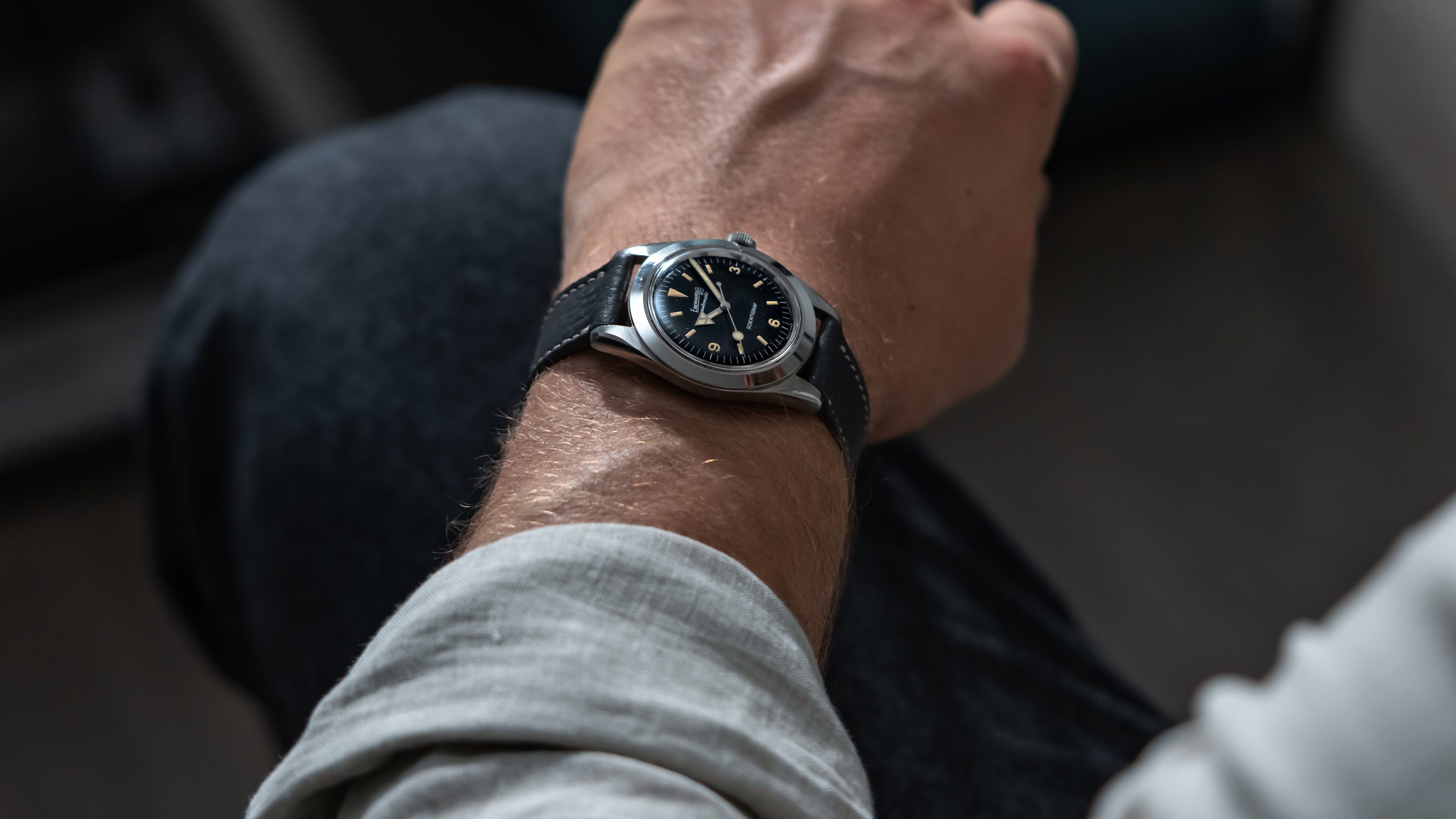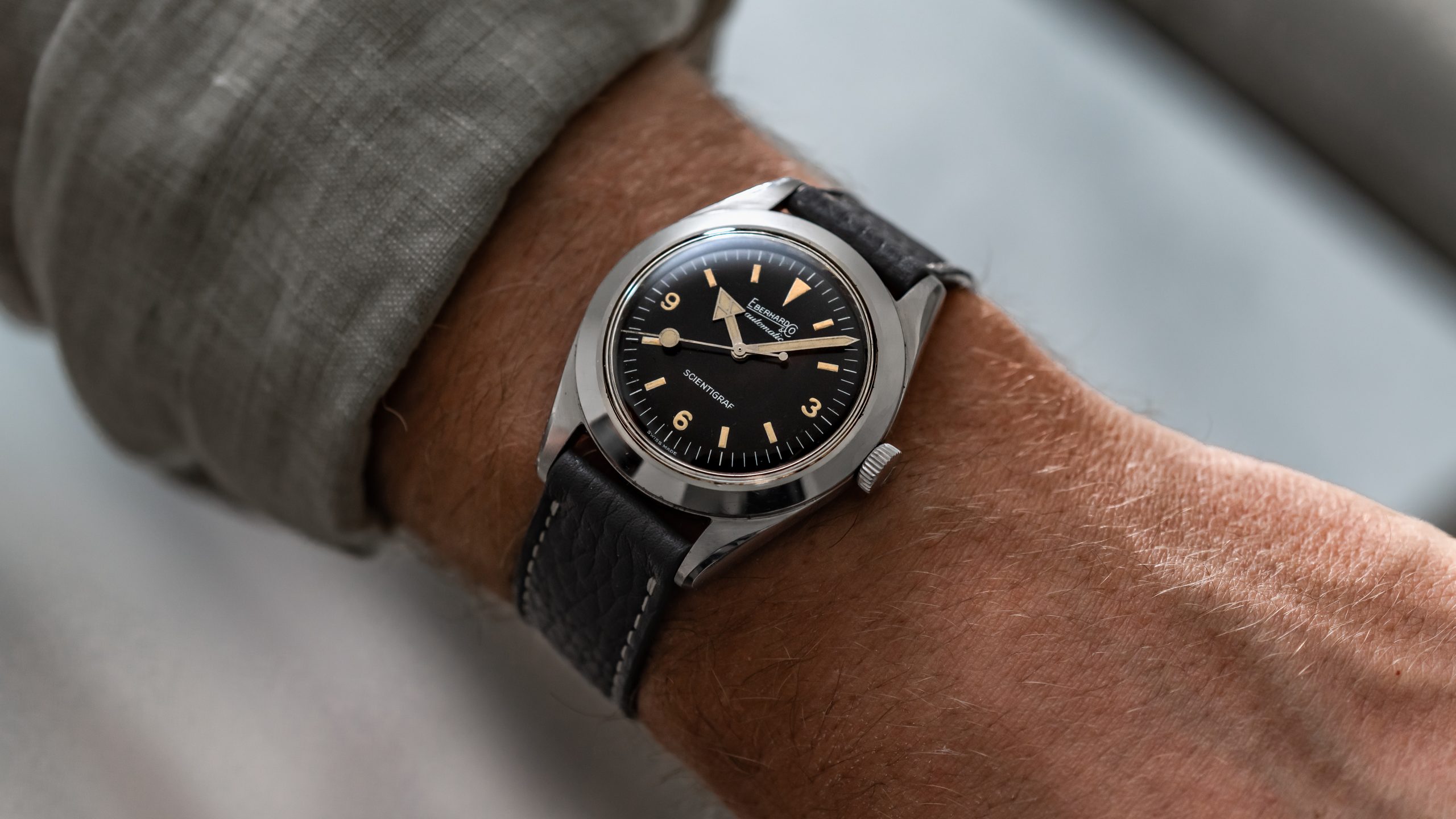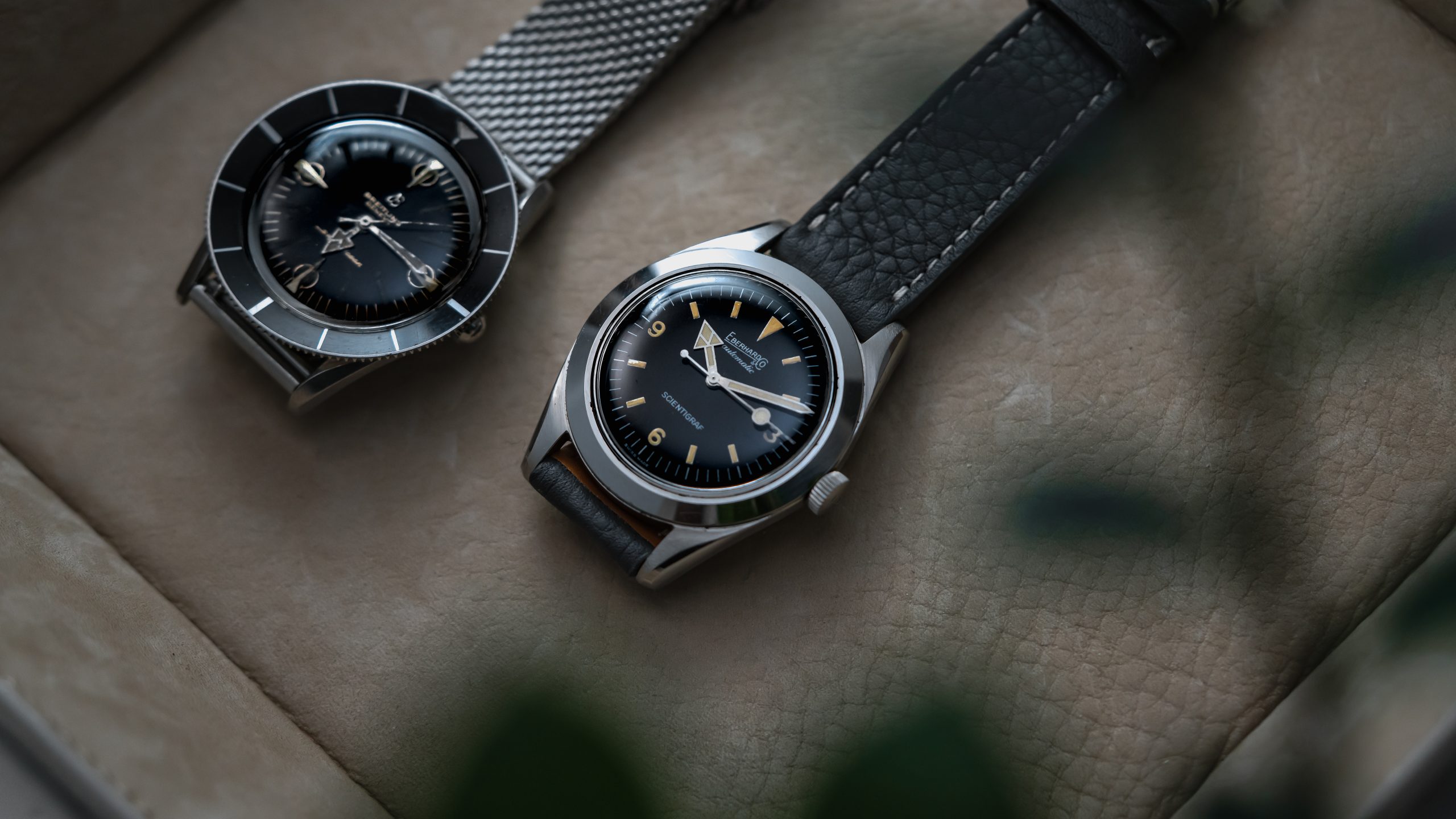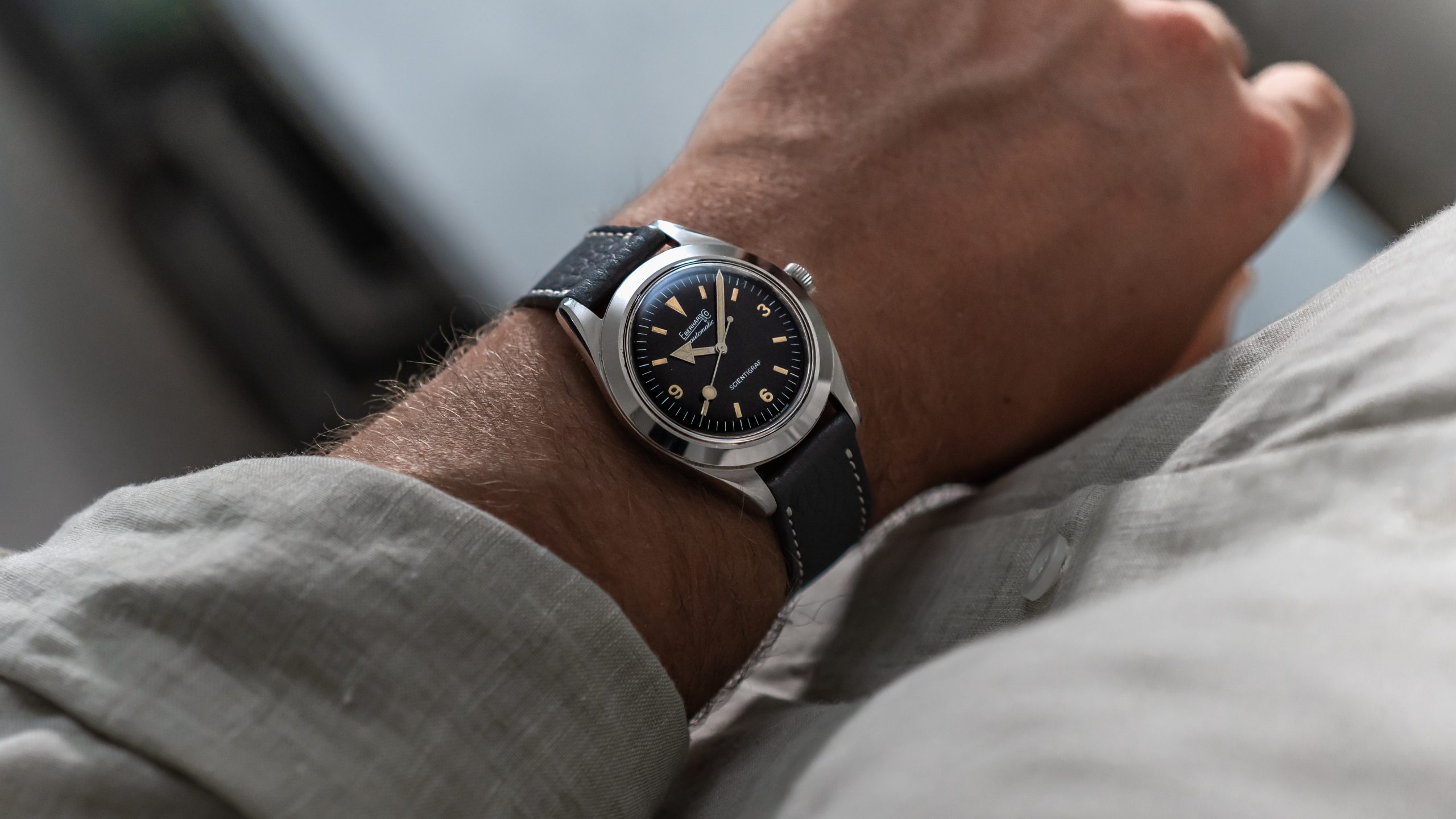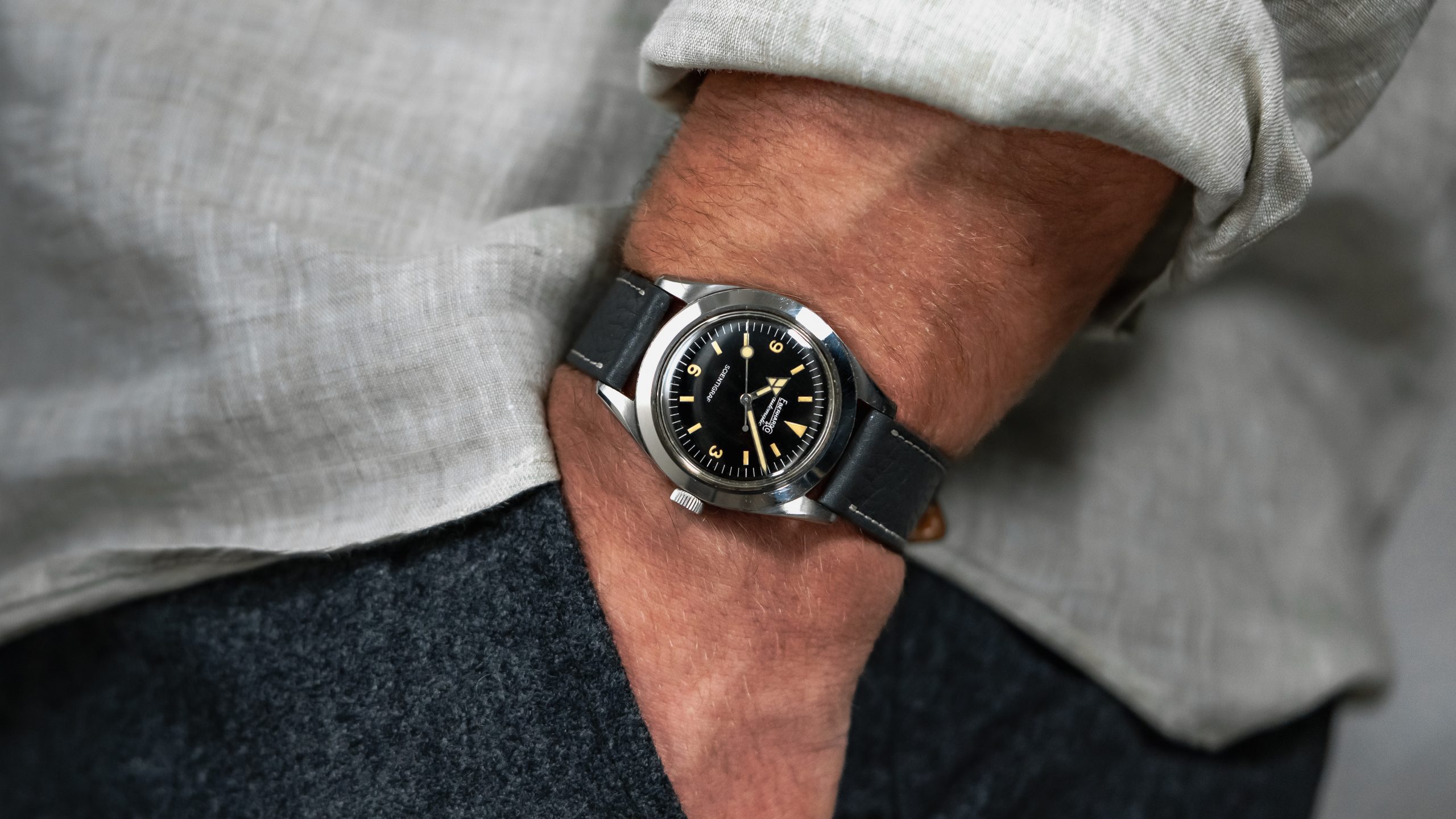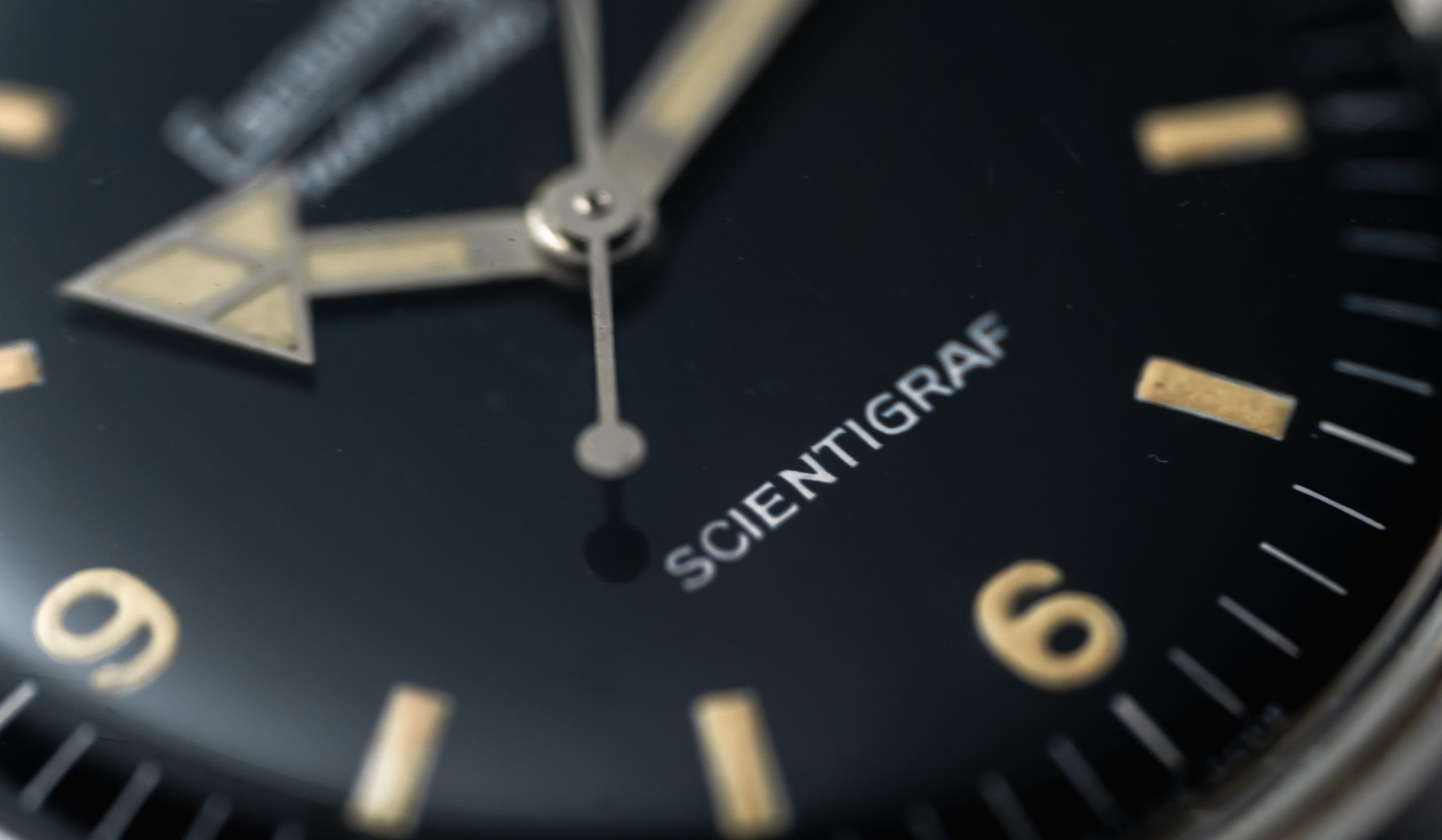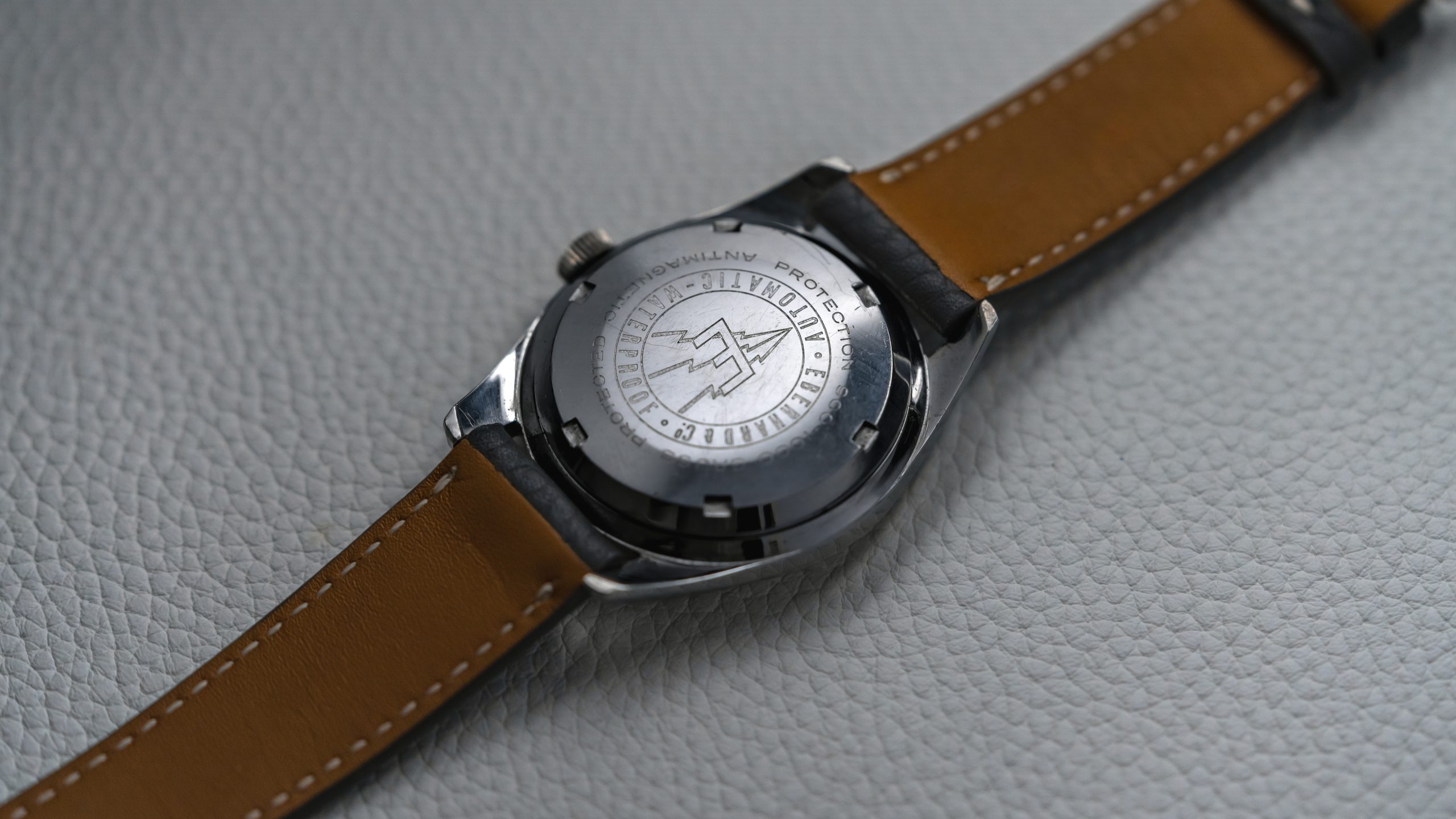The aptly-named Scientigraf was Eberhard's answer to the Milgauss, a true tool watch that stands alone in the market today for two reasons. First, it is exceptionally rare, even by Eberhard standards. A handful are thought to still be surviving today. Second, the looks. There is no other vintage antimagnetic watch with an Explorer-styled dial, lollipop hand, 38mm very thin case, and wide, sterile steel bezel.
The Milgauss, Railmaster, Ingenieur, 3417 A-Mag, and Geophysic were all introduced between the late 50s and early 60s in response to the growing cold war threat. Nuclear scientists and the dawn of the space age created a need for precision instruments which would not be effected by large electric currents. It was an era where the world believed science would solve all our problems.
Eberhard introduced this Scientigraf in 1961 with an advertised 900-1000 gauss resistance thanks to an iron Faraday cage around its automatic calibre 11500. But it is this dial that has made it famous. Earlier iterations had arrow indices with non-luminous 12-3-6-9 in white. It was only toward the very end of production that the dial shown here was created. Its semi-gloss, with wide tritium applications, a luminous 3-6-9, lollipop seconds hand, and restrained text. The case is both larger and slimmer than a 1016, 38mm with a wide bezel and a very interesting lug architecture that includes a swooping bevel application. This is not even to mention the thunderbolt caseback engraving.
Including this Scientigraf, there are only three other examples currently known to the community with this latter 'Explorer' dial. In terms of condition, this example is the clear standout. Once it gets on your wrist, it's a difficult one to take off. It's light, purposeful, and totally it's own aesthetic in every detail.

